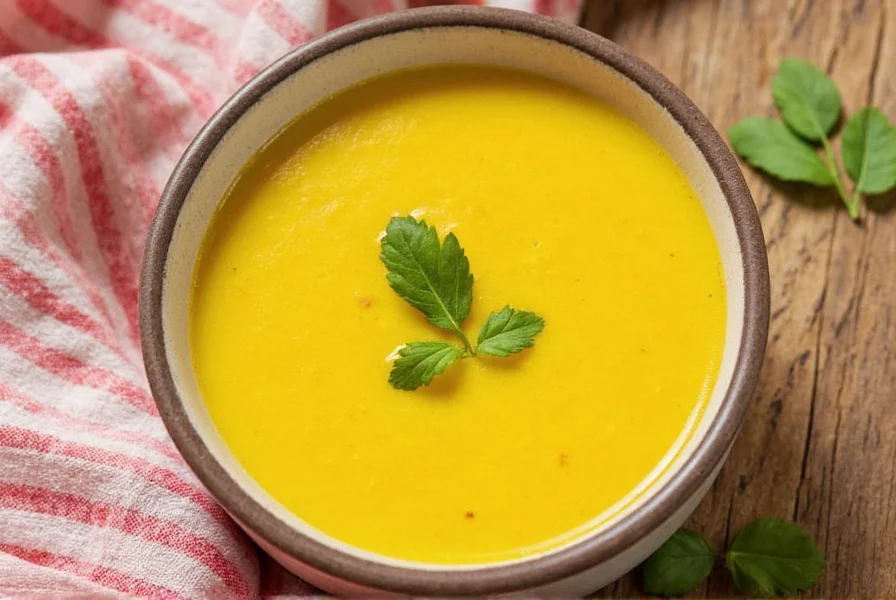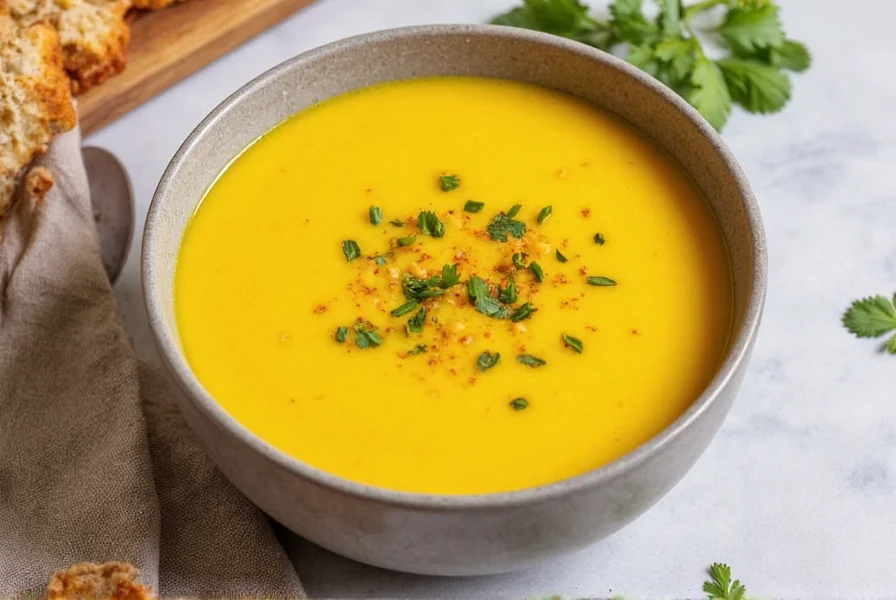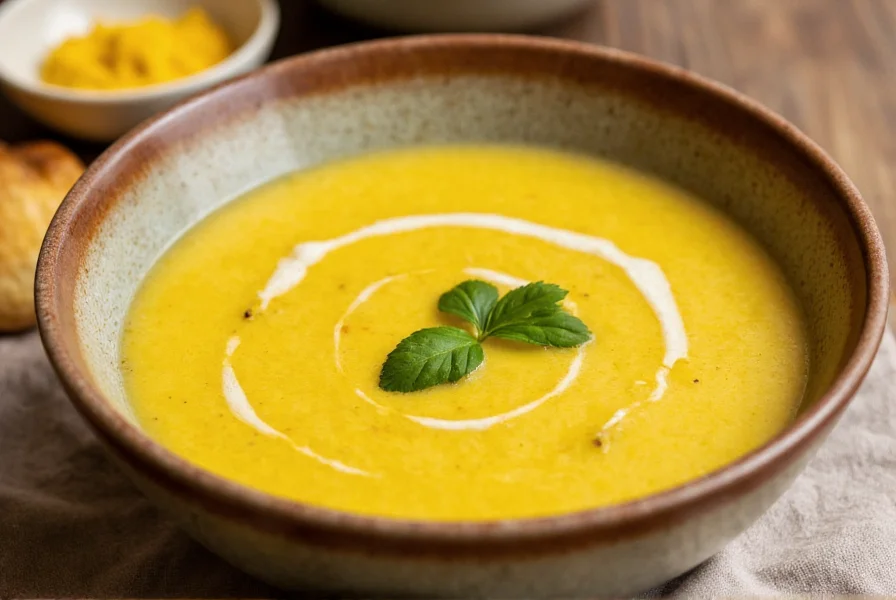Golden-hued chicken turmeric soup has surged in popularity as both a culinary delight and wellness staple. This vibrant broth combines the comforting familiarity of classic chicken soup with the powerful health properties of turmeric, creating a dish that satisfies both palate and wellbeing. Unlike ordinary soups, the strategic inclusion of black pepper significantly increases curcumin bioavailability by up to 2,000%, making this preparation method particularly effective for harnessing turmeric's benefits.
The Science Behind Turmeric's Power
Turmeric contains curcumin, a polyphenol compound with documented anti-inflammatory and antioxidant properties. Research published in Advances in Experimental Medicine and Biology confirms curcumin's ability to inhibit multiple inflammation pathways at the molecular level. However, curcumin has notoriously poor bioavailability when consumed alone. The traditional pairing of turmeric with black pepper (containing piperine) and healthy fats addresses this limitation, creating what nutrition scientists call a "bioenhanced" food combination.
When preparing chicken turmeric soup, the cooking process further enhances benefits. Simmering turmeric in liquid helps release its active compounds, while the chicken provides glycine and other amino acids that support gut health and tissue repair. This synergy between ingredients transforms a simple soup into a functional food with multiple health advantages.

Cultural Roots and Culinary Evolution
While modern wellness enthusiasts have embraced chicken turmeric soup, its foundations span multiple culinary traditions. Southeast Asian cuisines have long incorporated turmeric into broths for both color and medicinal properties. In Ayurvedic cooking, turmeric soup with chicken represents a "rasa" preparation designed to nourish the body's seven tissue layers. Middle Eastern variations often include turmeric in chicken broths with warming spices like cumin and coriander.
The contemporary version popularized in Western wellness circles typically features a lighter broth with pronounced citrus notes from lemon juice, distinguishing it from richer, coconut milk-based turmeric soups found in Thai or Indonesian cuisine. This adaptation maintains the core health benefits while appealing to diverse palates.
Perfecting Your Chicken Turmeric Soup Recipe
Creating an exceptional chicken turmeric soup requires attention to ingredient quality and preparation technique. The following elements separate adequate versions from truly outstanding ones:
| Ingredient | Quality Indicator | Why It Matters |
|---|---|---|
| Turmeric | Freshly grated or high-quality powder | Fresh turmeric contains 3-4x more curcuminoids than dried |
| Chicken | Bone-in pieces or quality stock | Bones release collagen and gelatin for thicker, more nutritious broth |
| Black Pepper | Freshly cracked | Piperine degrades quickly after grinding |
| Fat Source | Coconut milk or olive oil | Curcumin is fat-soluble; healthy fats increase absorption |
Step-by-Step Preparation Guide
Follow these professional techniques to maximize flavor and nutritional benefits in your anti-inflammatory chicken turmeric soup:
- Bloom the spices: Heat 1 tablespoon coconut oil, then add 1 tablespoon turmeric powder (or 2 tablespoons freshly grated) with ½ teaspoon black pepper. Cook for 60 seconds to activate compounds
- Build flavor foundation: Add chopped onions, garlic, and ginger, sautéing until translucent but not browned
- Add protein: Incorporate 1½ pounds bone-in chicken pieces (thighs work best for flavor)
- Simmer properly: Cover with 6 cups broth, bring to gentle simmer (not boil), and cook uncovered for 30-45 minutes
- Finish with acid: Remove from heat and stir in 2 tablespoons fresh lemon juice to preserve heat-sensitive compounds
- Rest before serving: Allow soup to sit 10 minutes for flavors to meld and curcumin to stabilize
Avoid common mistakes like boiling the soup vigorously (degrades curcumin), adding turmeric too late in the process, or omitting the black pepper. For optimal anti-inflammatory benefits, consume within 2 hours of preparation as curcumin begins to degrade when stored.

Adapting for Dietary Needs
This versatile recipe accommodates various dietary requirements without sacrificing benefits:
- For autoimmune protocols: Omit nightshades and increase turmeric to 3 tablespoons with additional ginger
- For low-FODMAP diets: Use garlic-infused oil instead of fresh garlic and limit onions to green parts only
- For quicker preparation: Use pre-cooked rotisserie chicken but add turmeric early in reheating process
- For enhanced protein: Add 1 cup cooked lentils during final simmer for complete plant-based protein pairing
Serving and Storage Recommendations
Maximize both enjoyment and nutritional value with these serving tips:
- Pair with a small green salad containing healthy fats (avocado or olive oil dressing) to further boost curcumin absorption
- Store in airtight glass containers for up to 4 days—metal containers can degrade turmeric compounds
- Freeze in portion-sized containers for up to 3 months (thaw overnight in refrigerator)
- When reheating, add a splash of water or broth and warm gently without boiling
- Add fresh herbs and lemon juice after reheating to preserve volatile compounds
Chicken turmeric soup represents the perfect intersection of culinary tradition and modern nutritional science. By understanding the synergy between ingredients and proper preparation techniques, you transform a simple comfort food into a functional meal that supports whole-body wellness. The vibrant golden color isn't just visually appealing—it's a visible indicator of the potent phytochemicals working to support your health with every spoonful.











 浙公网安备
33010002000092号
浙公网安备
33010002000092号 浙B2-20120091-4
浙B2-20120091-4